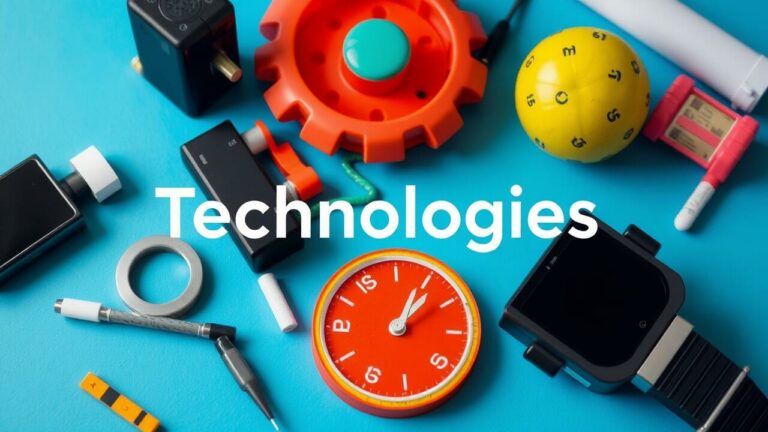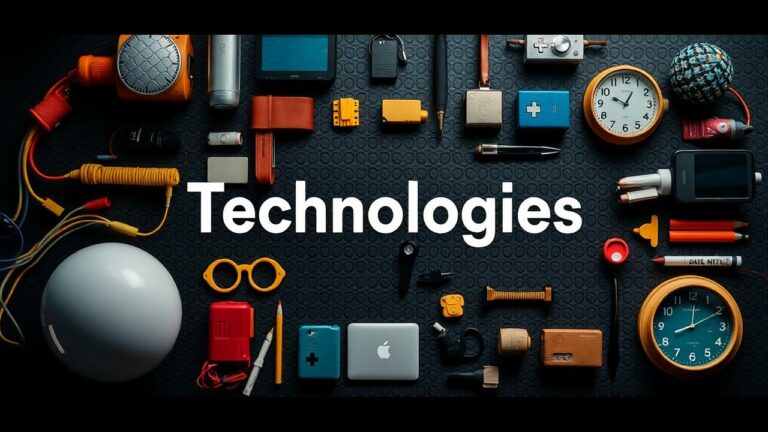Technological innovation
Mobile Technology
The explosion of mobile technology has radically reshaped the way we communicate around the world. Smartphones, once a novelty, are now everywhere—like oxygen in our daily lives—keeping us tethered and connected across vast distances, fostering conversations that happen in real-time. Instant messaging apps buzz incessantly, social media platforms morph before our eyes, and video calls make distance feel like an illusion. This isn’t just about chatting with friends; it’s a seismic shift for businesses too! Companies are increasingly leaning on these mobile solutions to boost collaboration and engage customers—an ecosystem where agility and efficacy thrive.
As mobile tech surges forward at breakneck speed, applications evolve into more complex entities than ever before. These advancements empower businesses to craft personalized experiences that keep users coming back for more—a delightful dance of satisfaction and loyalty! Imagine integrating augmented reality or machine learning into your pocket-sized device; it sparks a wildfire of creativity and innovation across industries! But the ripples don’t stop there—they weave through everyday life, education pathways, access to information—all redefining what society expects in this whirlwind digital era we’re navigating together.
The Rise of Applications and Their Societal Impact
Applications have dramatically reshaped myriad facets of everyday existence—think communication, shopping, education. The sheer convenience they deliver is pivotal in molding user behavior and societal norms alike. With mobile applications at our fingertips, interactions happen in the blink of an eye, stretching engagement across vast distances like never before. Businesses are pivoting to this new reality, recognizing apps as indispensable instruments for forging connections with consumers and elevating service delivery.
But wait! The societal ramifications stretch far beyond mere convenience. Applications have become empowering beacons for marginalized groups, unlocking access to resources and information that once felt tantalizingly out of reach. Educational apps? They’re revolutionizing learning opportunities for individuals nestled within diverse environments—bridging those pesky gaps created by geography and economic disparities. Health and wellness applications champion better lifestyles; they nudge users toward prioritizing their well-being amidst the chaos of modern life. As these digital tools evolve with breathtaking speed, their influence seeps deeper into the very fabric of society, illuminating profound shifts in how communities function and intertwine with one another.
| Application Type | Impact on Society | Examples |
|---|---|---|
| Communication | Enhances connectivity across distances and cultures | WhatsApp, Zoom, Slack |
| Education | Provides access to learning resources, especially for marginalized groups | Duolingo, Khan Academy, Coursera |
| Health & Wellness | Promotes healthier lifestyles and mental well-being | MyFitnessPal, Headspace, Noom |
| Shopping | Revolutionizes consumer behavior and convenience | Amazon, eBay, Shopify |
| Social Networking | Fosters community building and social interaction | Facebook, Instagram, Twitter |
The Importance of Research and Development
The realm of research and development stands as the very bedrock of technological evolution, a relentless force propelling innovation through the labyrinthine corridors of countless industries. Organizations pour immense resources into R&D, striving to birth new products, refine existing services, and streamline processes with an almost feverish intensity. This methodical journey into the unknown not only ignites creativity but also empowers companies to cling tightly to their competitive advantage amid markets that shift like quicksand beneath their feet. By honing in on cutting-edge scientific breakthroughs and technological marvels, businesses can pinpoint nascent trends and recalibrate their strategies just in time—ensuring they remain leaders in their respective arenas.
Yet the ripples of R&D’s impact stretch far beyond mere corporate walls; they reverberate throughout entire economies and societal structures. Both governments and private entities grasp the urgent need for nurturing policies and funding initiatives that cultivate fertile ground for innovation’s seeds to sprout. When academia aligns its wisdom with industry’s prowess—and government plays facilitator—the result can be nothing short of transformative advancements capable of tackling our most pressing global dilemmas. By elevating research and development as a priority, societies unlock technology’s vast potential to enhance quality of life across myriad dimensions—be it healthcare, sustainability, or other vital spheres demanding attention.
Funding and Support for Innovative Projects
Innovative projects—those dazzling bursts of creativity and ambition—often find themselves in dire need of hefty financial resources to leap from mere ideas into tangible realities. The landscape is rich with diverse funding sources, each playing a pivotal role: government grants, venture capital, crowdfunding platforms—they’re all part of the intricate dance that supports these audacious initiatives.
Take government programs, for instance; they often zero in on nurturing technological advancements, showering startups and research institutions with grants designed to lighten their financial loads. This infusion of cash doesn’t just ease burdens—it sparks collaboration among various entities, weaving together a tapestry that strengthens the very fabric of our innovation ecosystem.
In the bustling realm of private enterprise, venture capital firms are on the prowl for those sparkling gems—startups brimming with potential for significant returns. These firms don’t merely toss money at budding ventures; they offer strategic insights and invaluable networking opportunities that can propel growth like rocket fuel. Meanwhile, enter crowdfunding—a game-changing alternative! It empowers entrepreneurs to tap directly into individual investors eager to support exciting projects. This democratized model invites a kaleidoscope of creators into the mix and paves the way for groundbreaking products that might otherwise slip through the cracks left by traditional funding paths.
The Role of Startups in Driving Innovation
Startups have erupted as a vital force within the swirling vortex of technological innovation. They relentlessly upend established norms, zooming in on niche markets and conjuring solutions meticulously crafted for specific consumer cravings. This nimbleness grants them the freedom to dance with emerging technologies and delve into unconventional ideas, often culminating in breakthroughs that larger corporations might overlook—trapped as they are in their own rigid frameworks and aversion to risk.
The very culture of innovation pulsing through these small enterprises cultivates an atmosphere where creativity can blossom wildly, allowing for rapid prototyping and the furious iteration of products. But wait—there’s more! Startups don’t just propel technological advancement; they also serve as crucial engines of economic growth. By generating jobs and igniting investment flames, they breathe life into local economies.
Through attracting venture capital like moths to a flame and forging symbiotic partnerships with educational institutions and research hubs, these dynamic companies craft ecosystems ripe for perpetual growth and learning. The electrifying interplay between startups and established industries often sparks collaborative ventures that elevate overall innovation—a synergy making them absolutely indispensable players in the ever-evolving tech landscape.
From Ideas to Impact
The odyssey from a mere spark of an idea to concrete influence is a labyrinthine path filled with critical junctures that entrepreneurs must deftly maneuver. It all kicks off with ideation—the birthplace where imaginative solutions emerge, tackling specific dilemmas or voids in the marketplace. Following this creative inception, the journey often leaps into prototyping, a phase that empowers innovators to trial their concepts against the unforgiving backdrop of reality. Here, feedback becomes an indispensable treasure trove—guiding and molding products and services until they resonate harmoniously with user demands.
Yet, lurking behind every entrepreneur’s aspiration is the formidable challenge of securing funding—a veritable rite of passage. Startups frequently find themselves courting venture capitalists, angel investors, or rallying support through crowdfunding platforms to escalate their visions into tangible entities. A robust business model coupled with a compelling value proposition can catapult a project’s allure among prospective financiers. But here’s the twist: successful startups don’t merely chase profit; they also endeavor to weave social or environmental value into their fabric—amplifying their resonance far beyond just monetary gain!
Global Trends in Technological Advancement
The landscape of technological advancement? Oh, it’s a whirlwind of change, perpetually morphing under the weighty forces of globalization and an ever-tightening web of market interconnectivity. Innovations like artificial intelligence, blockchain, and the Internet of Things (IoT)—they’re not just buzzwords; they’re commanding attention across a smorgasbord of industries! These remarkable technologies do more than just streamline operations; they carve out entirely new business models from the fabric of old paradigms. Companies are diving headfirst into data analytics—sifting through oceans of information to extract insights that empower sharper decision-making and craft experiences for customers that feel almost bespoke.
But wait! Emerging markets are stepping onto this global stage with flair. Regions such as Southeast Asia and Africa are witnessing an electrifying surge in tech adoption—thanks largely to a youthful population brimming with digital prowess. This demographic shift is sparking insatiable demand for cutting-edge solutions designed specifically for local contexts, igniting a dazzling startup culture that defies convention. As these areas blaze their own trails forward, their distinctive solutions and methodologies dispense invaluable lessons that ripple outward, influencing practices around the globe—a true testament to a thriving tapestry woven from diverse threads in our technological ecosystem!
Regional Innovations and Their Global Influence
Innovations often spring forth from the peculiar challenges and serendipitous opportunities that specific regions present. Take Silicon Valley, for example—it’s not just a place; it’s a legend of technological brilliance, where startups thrive in an ecosystem rich with creativity. This bustling hub pulls in talent from every corner of the globe, igniting vibrant collaborations among entrepreneurs, investors, and researchers alike. The result? A whirlwind of advancements in software, artificial intelligence, and biotechnology that don’t merely reshape the local economy but ripple out to influence global trends.
Now flip the script to Shenzhen—a city that’s undergone a radical metamorphosis into a manufacturing juggernaut! Here lies an expertise in hardware development so fine-tuned it’s almost magical. This regional focus has given birth to lightning-fast prototyping of consumer electronics that sends shockwaves through global supply chains and alters consumer habits overnight. These innovations are more than mere curiosities; they serve as powerful reminders that localized breakthroughs can create worldwide resonance—sparking shifts in market demand and catalyzing similar endeavors across far-flung locales. The intricate dance between local innovation and its expansive global impact underscores the perplexing complexity characterizing today’s technological landscape!
Future Skills for a Technologically Advanced Workforce
In this whirlwind of a technological era, where advancements seem to unfold at breakneck speed, the call for a workforce brimming with an eclectic mix of skills is louder than ever. Digital literacy? Absolutely essential! Data analysis and programming prowess? Non-negotiable in today’s diverse industries. But wait—there’s more! Professionals must don their capes of adaptability because as technology morphs and transforms before our very eyes, staying static simply won’t cut it. Organizations are on the prowl for those rare gems who can tango with AI, waltz through machine learning intricacies, and embrace automation tools—the very embodiment of innovative problem-solving that the industry craves.
Yet let us not forget: beyond the realm of hard skills lies an equally vital treasure trove—soft skills have surged to prominence in this modern workplace landscape! Picture effective communication flowing like water among colleagues; teamwork meshing seamlessly within multidisciplinary squads; critical thinking slicing through complex challenges like a hot knife through butter. As technology whittles away geographical barriers, cultural competency transforms into a prized asset when executing global projects. And here’s the kicker: continuous learning and professional growth aren’t just buzzwords—they’re empowering workers to navigate the choppy waters of ongoing technological upheaval while ensuring they remain relevant and impactful in their roles!
Preparing for Jobs in a Rapidly Changing Landscape
In the whirlwind of today’s job market, where change is the only constant and evolution happens at breakneck speed, adaptability has emerged as an essential skill for professionals spanning every conceivable industry. The unyielding surge of technological progress demands a workforce that isn’t just adept with the tools currently in their arsenal but one that’s also hungry to absorb new ones like a sponge. As automation and artificial intelligence begin to redefine traditional roles—disrupting familiar landscapes—employees must cultivate a mindset anchored in perpetual learning. This not only builds resilience against potential job displacement but empowers individuals to navigate seamlessly into nascent fields brimming with opportunities that crave innovative thought and technical savvy.
Furthermore, educational institutions and training programs are increasingly waking up to the pressing need for curricula that mirror real-world industry requirements. By weaving together practical experiences with an emphasis on soft skills alongside rigorous technical instruction, these programs are sculpting students who can tackle genuine challenges head-on. Networking avenues with industry titans can significantly amplify employability—offering priceless glimpses into prevailing trends and unveiling those coveted skill sets most craved by employers today. As collaboration becomes paramount amid growing diversity within teams—and remote work continues its upward trajectory—the focus on problem-solving will be nothing short of vital.
- Embrace a lifelong learning mindset to stay updated with industry trends.
- Seek out training programs that offer hands-on experience in your field.
- Develop soft skills such as communication, teamwork, and critical thinking.
- Network actively to forge connections with industry professionals.
- Stay informed about technological advancements and their implications for your job.
- Be open to cross-training and diversifying your skill set.
- Focus on collaborative projects to enhance teamwork abilities in diverse settings.
Conclusion
Technological innovation is like a whirlwind, swirling through our society and redefining everything from how we communicate to the very fabric of business dynamics. It’s a chaotic dance between research labs buzzing with ideas, nimble startups eager to disrupt norms, and sweeping global trends that shape our collective future. This rich interplay creates an ecosystem where concepts can take root and flourish, ultimately leading to groundbreaking solutions for challenges both present and looming on the horizon. As industries morph and shift under this relentless wave of change, adapting to—and capitalizing on—these technologies becomes not just beneficial but essential for maintaining any semblance of competitive edge.
Peering into the future, one can’t help but note that honing skills specifically designed for these new technological terrains is crucial. Equipping the workforce with tools suitable for emerging job roles will fuel economic growth while ensuring societies can fully harness the immense power of innovation at their fingertips. The collaborative energy generated across different sectors will set the rhythm and trajectory for advancements yet to come, underscoring an urgent need for continuous investment in progress—a commitment that must be unwavering as we navigate this ever-evolving landscape.







